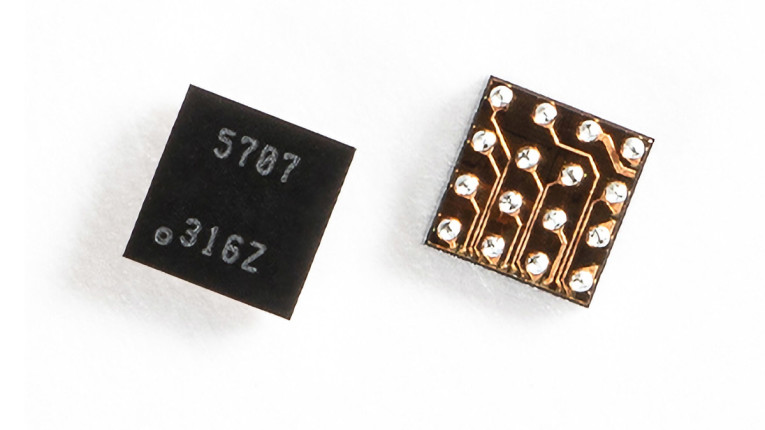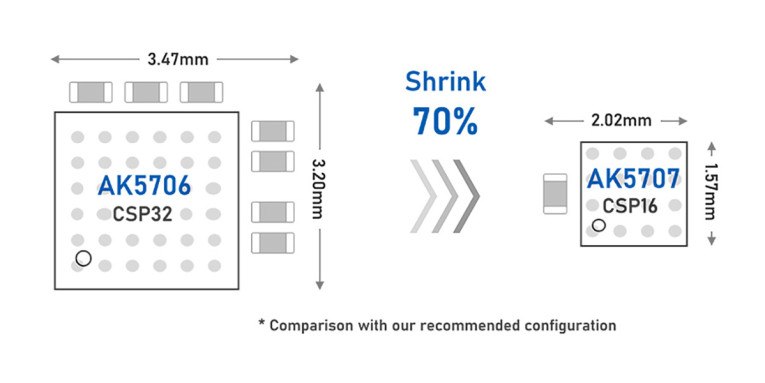
Operating at only 34µA, the Acoustic Activity Analyzer outputs an interrupt signal to activate the built-in ADC or external SoC when it detects an anticipated sound with adjustable parameter settings. This allows the system to sleep, significantly reducing the standby power of the equipment. Additionally, the efficiency of the AK5707 ADC makes it equally well-suited for products such as voice-triggered wearable devices, which may require constant audio data capture to the integrated buffer.
In addition, by immediately storing the data that has been recorded by the ADC in an internal buffer, the SoC can reference audio data retroactively before waking from sleep. Once qualifying audio activity has been detected, the integrated audio buffer begins recording and a wakeup interrupt is sent to the system SoC. The SoC may then read the AK5707’s audio buffer and further analyze the contents without having missed audio activity that occurred during boot.

Assuming applications such as battery-operated smart sensors for safety, security and environmental alertness, AKM developed a unique algorithm for detecting glass breaking sounds and improved the rejection performance of sounds other than glass breakage, to determine how to maximize power saving.
The ADC operates at only 200µA, a 70% reduction from AKM's conventional products, while maintaining a dynamic range of 95dB when operating at a sampling frequency of 16kHz. The device supports up to 16-bit/48kHz and 96dB dynamic range. Developers can explore the flexible acoustic parameter settings to allow detection of various sound patterns. Operating with a current consumption of 34µA, the acoustic analysis function is more than just volume level detection; it is highly configurable with multiple acoustical parameters that can be flexibly set.
Developers will be able to test and implement different types of acoustic analysis by replacing the algorithm, including for detection of pattern sounds including glass breaking, alarm, and voice, and audio content classification by low or high frequency and short or long duration.
AKM is currently providing samples, with mass production shipments scheduled to begin in September 2024.
www.akm.com








